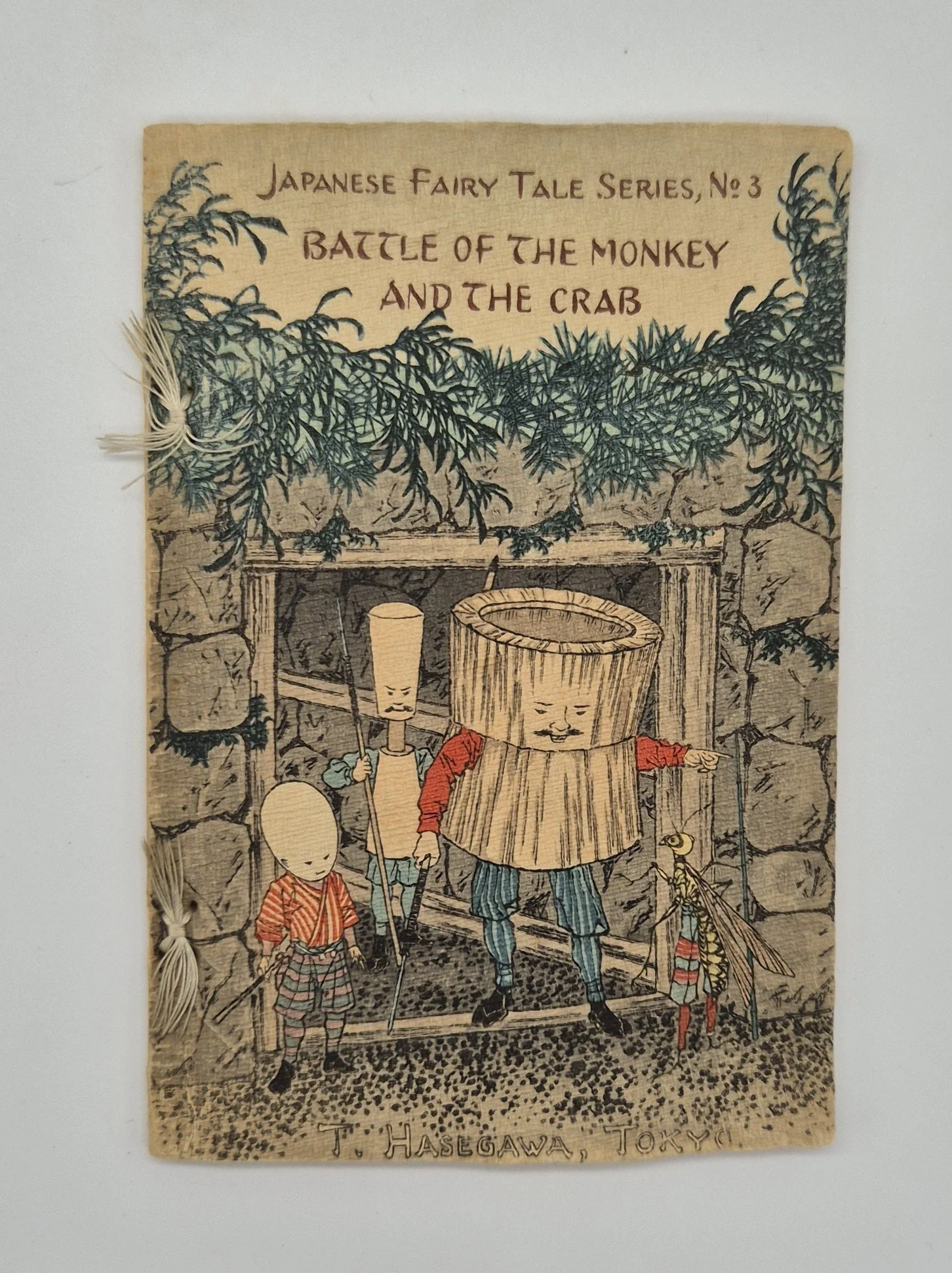 Image 1 of 1
Image 1 of 1


Battle of the Monkey and the Crab. Japanese Fairy Tale Series No. 3
[THOMPSON, David, Trans.]
Battle of the Monkey and the Crab. Japanese Fairy Tale Series No. 3
Tokyo: T. Hasegawa, 1935
12mo., printed throughout in full colour on japanese crepe paper; double-folded and sewn; the covers featuring an anthropomorphosised rice-mortar, pounder, bee and egg; unpaginated [pp. xiv]; with text and double-ruled borders in black throughout, as well as numerous woodcut illustrations, including several double-page; a particularly bright copy, a little creased as is common, with some fraying to the binding string.
Later printing, first published in 1886. The third book in the Japanese Fairy Tale first series. A tale of disagreement between a money and a disgruntled crab, which dissolves into war. Helped by a rice-mortar, pounder and bee, the crab council of war seeks revenge against the money king - with brutal results.
The twenty books which comprise the first Japanese Fairy Tale series were published in Japan at the turn of the century by Takejiro Hasegawa, who aimed to produce a run of educational titles which would introduce traditional stories from Japan to a wider audience. Appearing between 1885 and 1922, the books were beautifully and meticulously printed with woodcut illustrations by Japanese artists, and were printed on traditional mitsumata paper. The books remain desirable today for their intricate and novel designs, and are particularly sought after in such bright condition.
[THOMPSON, David, Trans.]
Battle of the Monkey and the Crab. Japanese Fairy Tale Series No. 3
Tokyo: T. Hasegawa, 1935
12mo., printed throughout in full colour on japanese crepe paper; double-folded and sewn; the covers featuring an anthropomorphosised rice-mortar, pounder, bee and egg; unpaginated [pp. xiv]; with text and double-ruled borders in black throughout, as well as numerous woodcut illustrations, including several double-page; a particularly bright copy, a little creased as is common, with some fraying to the binding string.
Later printing, first published in 1886. The third book in the Japanese Fairy Tale first series. A tale of disagreement between a money and a disgruntled crab, which dissolves into war. Helped by a rice-mortar, pounder and bee, the crab council of war seeks revenge against the money king - with brutal results.
The twenty books which comprise the first Japanese Fairy Tale series were published in Japan at the turn of the century by Takejiro Hasegawa, who aimed to produce a run of educational titles which would introduce traditional stories from Japan to a wider audience. Appearing between 1885 and 1922, the books were beautifully and meticulously printed with woodcut illustrations by Japanese artists, and were printed on traditional mitsumata paper. The books remain desirable today for their intricate and novel designs, and are particularly sought after in such bright condition.

